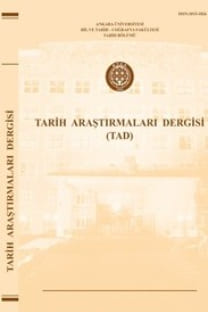Chalkokondyles’in Anlatımına Göre Sultan II. Murad’ın Tahta Çıkışı
Laonikos Chalkokondyles hayatının büyük bir kısmını 15. yüzyıl Bizans dünyasının önemli merkezlerinden biri olan Mistra’da geçirmiş ve Mora Despotluğu’nun Osmanlı idaresine bağlanmasından sonra Atina’ya yerleşerek “Laonikou Apodeiksis Historiōn/Tarih” adlı eserini yazmıştır. Chalkokondyles, on bölümden oluşan “Tarih”inde, Osmanlı Devleti’nin kuruluşundan 1463/64 yılına kadar olan dönemi ele almış ve eserin beşinci bölümünün hemen başında Sultan II. Murad’ın tahta çıkışını etraflı bir şekilde anlatmıştır. II. Murad’ın hükümdarlığının ilanından sonra Bizanslıların Mustafa Çelebi’yi Rumeli’ye çıkardıklarını aktarmış ve taht mücadelesinde İmparatorun tarafsız kalması için Bayezid Paşa’nın İstanbul’a elçiler gönderdiğini kaydetmiştir. İmparator II. Manuel ile oğlu İmparator VIII. İoannes’in arasındaki anlaşmazlığa değinmiş ve Mustafa Çelebi’nin Bizans ile yapmış olduğu anlaşmaya riayet etmeyerek Gelibolu’yu teslim etmediğini ifade etmiştir. Ayrıca Sultan II. Murad’ın bir Ceneviz gemisiyle Rumeli’ye geçtiğini ve Mustafa Çelebi’yi öldürttüğünü kaydetmiştir
Anahtar Kelimeler:
Laonikos Chalkokondyles, Sultan II. Murad, İmparator II
The Accession to the Throne of Sultan Murad II
Laonikos Chalkokondyles spent the largest part of his life in Mistra, one of the most important centers of the 15th century Byzantine world, and following the Ottoman annexation of the Despotate of Morea, he moved to Athens where he wrote the “Laonikou Apodeiksis Historiōn/Demonstrations of Histories”. Chalkokondyles, in his history consisted of ten books, narrates the events from the establishment of the Ottoman State until 1463/64. At the beginning of the fifth book he describes in detail the accession to the throne of Sultan Murad II. He writes that the Byzantines sometime after the proclamation of Murad II as Sultan, they took Mustafa Çelebi, Rumeli and that Bayezid Pasha sent his envoys to Constantinople in order to obtain Emperor’s neutrality. He accounts the dispute between Emperor Manuel II and his son Ioannes VIII and adds that Mustafa Çelebi acting adjacent to the agreement that he had made with Byzantium, refused to gave up Gallipoli. He also gives the details of Murad II’s transportation Rumeli by a Genoese ship and the execution of Mustafa Çeleb
Keywords:
Laonikos Chalkokondyles, Sultan Murad II Emperor Manuel II Palaiologos, Emperor Ioannes VIII Palaiologos, Mustafa Çelebi,
___
- Anonim Osmanlı Kroniği, haz. Necdet Öztürk, İstanbul 2000.
- Âşık Paşa-Zâde, Tevârih-i Âl-i Osman, nşr. Âli Bey, İstanbul 1332.
- Barker, John W., Manuel II Palaeologus (1391–1425): A Study in Late Byzantine Statesmanship, New Brunswick 1968.
- Başar, Fahamettin, “Mustafa Çelebi, Düzme”, DİA, cilt 31, s. 292–293.
- Chalkokondyles, Laonikos, Laonici Chalkokandylae, Historiarum Demonstrationes I-II, ed. Eugenius J. Darco, Budapestini 1922–1927.
- Doukas, Historia Turcobyzantina (1341–1462), ed. Vasile Grecu, Bucharest 1958.
- Imber, Colin, The Ottoman Empire 1300–1481, İstanbul 1990.
- İnalcık, Halil, “Mehemmed I”, EI2, VI, s. 973–978.
- --------------, “Murad II”, İA, VIII, s. 598–615.
- Kırlıdökme Mollaoğlu, Ferhan, “Laonikos Chalkokondyles’in Hayatı ve “Tarih”i”, OTAM, 21 (2007), s. 41–57.
- ----------------------------------------, Laonikos Chalkokondyles’in Kroniği ve Değerlendirilmesi (V.-VII. Bölümler), Ankara Üniversitesi Yayımlanmamış Doktora Tezi, Sosyal Bilimler Enstitüsü, Ankara 2005.
- Kugeas, S., “Notizbuch eines Beanamten der Metropolis in Thessalonike aus dem Anfang des XV. Jahrhunderts”, BZ, (1914) 19, s. 143–166.
- Mevlânâ Mehmed Neşrî, Cihânnümâ, haz. Necdet Öztürk, İstanbul 2008.
- Oruç b. Âdil, Oruç Beğ Tarihi, haz. Necdet Öztürk, İstanbul 2007.
- Rûhî Çelebi, “Ruhî Tarîhi - Oxford nüshası”, yay. Yaşar Yücel - Halil E. Cengiz, Belgeler, (1989–1992) XIV/18, s. 359–472.
- Schreiner, Peter, Die Byzantinschen Kleinchroniken I, Einleitung und Text, Wien 1975; II, Historischer Kommentar, Wien 1977.
- Sphrantzes, Georgios, Cronaca, ed. Riccardo Maisano, Roma 1990.
- Zachariadou, Elizabeth A., “Ottoman Diplomacy on the Danube Frontier (1420–1424)”, Harvard Ukranian Studies, vol. VII (1983), s. 680–690.
- Başar, “Mustafa Çelebi, Düzme”, s. 293. Mustafa Çelebi, Chalkokondyles’in kaydettiği
- gibi üç yıl değil, yaklaşık altı ay Rumeli’yi idaresi altında tutmuştur. Bkz. Schreiner, Die
- Byzantinschen Kleinchroniken I, no. 53/12 ve II, s. 412.
- ISSN: 1015-1826
- Yayın Aralığı: Yılda 2 Sayı
- Başlangıç: 1963
- Yayıncı: Levent KAYAPINAR
Sayıdaki Diğer Makaleler
Khioslu İon’un Epidemiai Eserinden Portreler
Osmanlı’da Kadın ve Kadın Hapishaneleri
Kitap Tanıtımı: Mehmet Ali KAYA, Septimius Severus: Roma’nın Afrikalı İmparatoru
Hititlerde Gündelik Hayata Dair İktisadi İlişkiler
Meyyafarikin’de Kahramanlık ve Fedakârlık
El Ğamdi Sa‘d B. Muhammed HUZEYFE, M. Mehdi İLHAN
Osmanlı İlmiyye Bürokrasisinde Merkez-Çevre İletişimine Dair Sorunlar (XVI. Yüzyıl)
Chalkokondyles’in Anlatımına Göre Sultan II. Murad’ın Tahta Çıkışı
Pîrî Reis’in Hürmüz Seferi ve İdamı Hakkındaki Türk ve Portekiz Tarihçilerinin Düşünceleri
Türkiye’de Kazak Kültür ve Tarihi Hakkındaki Çalışmalara Bir Bakış
